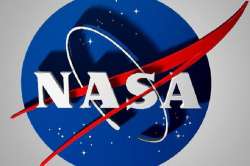NASA's Chandra Observatory back in action
The cause of Chandra’s safe mode on October 10 has now been understood and the operations team has successfully returned the spacecraft to its normal pointing mode.

NASA’s Chandra X-ray telescope –which observes galaxies from the Earth’s orbit — is back in action after suffering a technical glitch and going into safe mode last week, the US space agency said. The telescope is named after the Nobel Prize-winning Indian-American astrophysicist Subrahmanyan Chandrasekhar.
The cause of Chandra’s safe mode on October 10 has now been understood and the operations team has successfully returned the spacecraft to its normal pointing mode, NASA said in a statement.
The safe mode was caused by a glitch in one of Chandra’s gyroscopes resulting in a three-second period of bad data that in turn led the on-board computer to calculate an incorrect value for the spacecraft momentum.
A gyroscope is a device used for measuring or maintaining orientation in navigation systems. The erroneous momentum indication then triggered the safe mode, according to NASA.
The team has completed plans to switch gyroscopes and place the gyroscope that experienced the glitch in reserve.
Once configured with a series of pre-tested flight software patches, the team will return Chandra to science operations which are expected to commence by the end of this week, NASA said.
On October 10, Chandra entered safe mode, in which the observatory is put into a safe configuration, critical hardware is swapped to back-up units, the spacecraft points so that the solar panels get maximum sunlight, and the mirrors point away from the Sun.
Analysis of available data indicates the transition to safe mode was normal behaviour for such an event. All systems functioned as expected and the scientific instruments are safe.
“The cause of the safe mode transition is under investigation, and we will post more information when it becomes available,” NASA said in a statement.
Chandra is 19 years old, which is well beyond the original design lifetime of five years, NASA said.
In 2001, NASA extended its lifetime to 10 years. It is now well into its extended mission and is expected to continue carrying out forefront science for many years to come, it said.